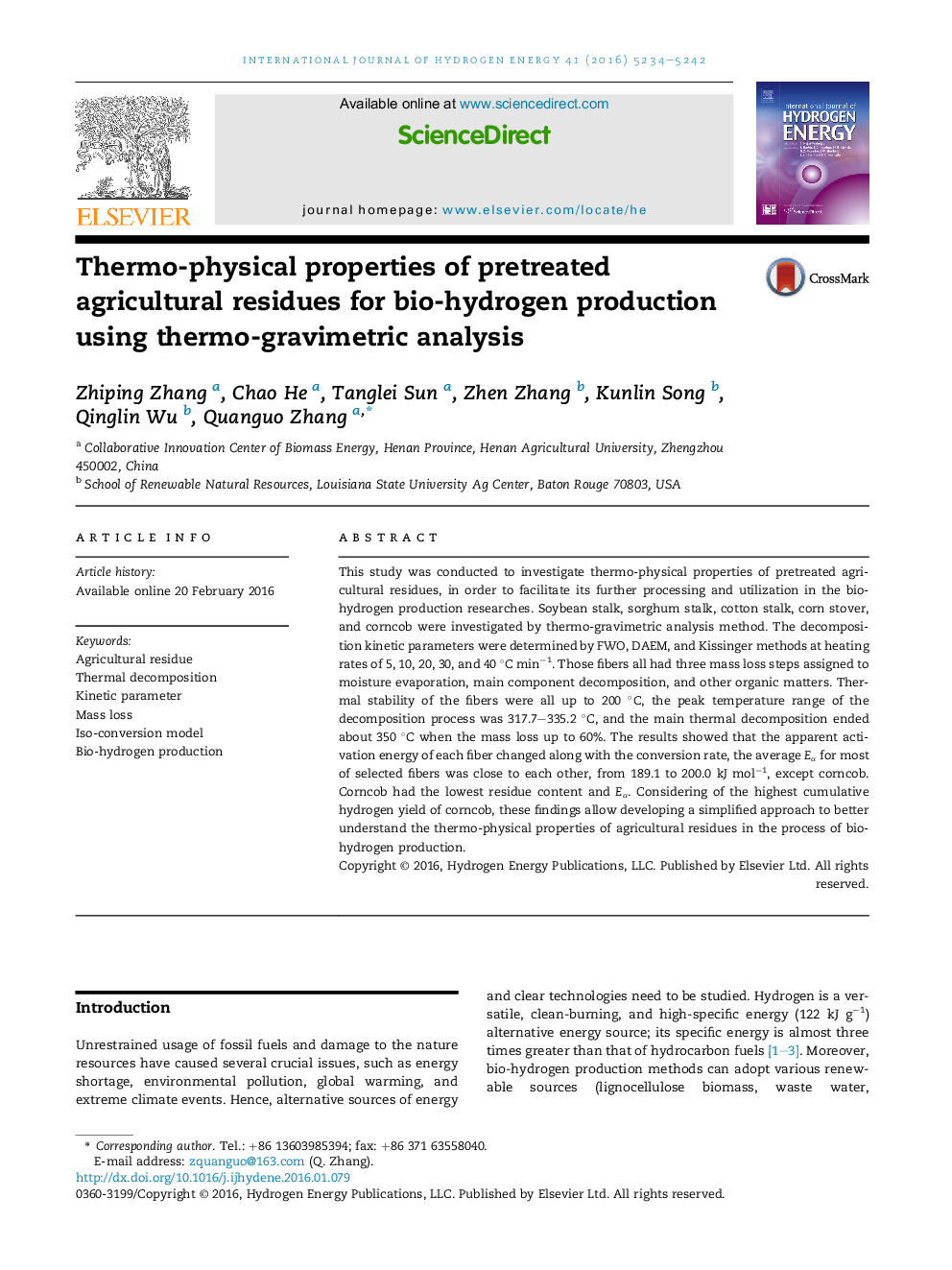| کد مقاله | کد نشریه | سال انتشار | مقاله انگلیسی | نسخه تمام متن |
|---|---|---|---|---|
| 1270960 | 1497415 | 2016 | 9 صفحه PDF | دانلود رایگان |
• Thermo-physical properties of several pretreated agricultural residues for photo-fermentation bio-hydrogen production were investigated.
• Different model-free methods were utilized to calculate the activation energy of each selected sample.
• Corncob had the lowest residue content, peak temperature and the lowest activation energy.
• Thermogravimetric method elucidated the thermos-physical of ARPs which related to the bio-hydrogen production.
• The lower residue content and activation energy is, the more hydrogen-production potential will be.
This study was conducted to investigate thermo-physical properties of pretreated agricultural residues, in order to facilitate its further processing and utilization in the bio-hydrogen production researches. Soybean stalk, sorghum stalk, cotton stalk, corn stover, and corncob were investigated by thermo-gravimetric analysis method. The decomposition kinetic parameters were determined by FWO, DAEM, and Kissinger methods at heating rates of 5, 10, 20, 30, and 40 °C min−1. Those fibers all had three mass loss steps assigned to moisture evaporation, main component decomposition, and other organic matters. Thermal stability of the fibers were all up to 200 °C, the peak temperature range of the decomposition process was 317.7–335.2 °C, and the main thermal decomposition ended about 350 °C when the mass loss up to 60%. The results showed that the apparent activation energy of each fiber changed along with the conversion rate, the average EαEα for most of selected fibers was close to each other, from 189.1 to 200.0 kJ mol−1, except corncob. Corncob had the lowest residue content and EαEα. Considering of the highest cumulative hydrogen yield of corncob, these findings allow developing a simplified approach to better understand the thermo-physical properties of agricultural residues in the process of bio-hydrogen production.
Journal: International Journal of Hydrogen Energy - Volume 41, Issue 10, 16 March 2016, Pages 5234–5242
